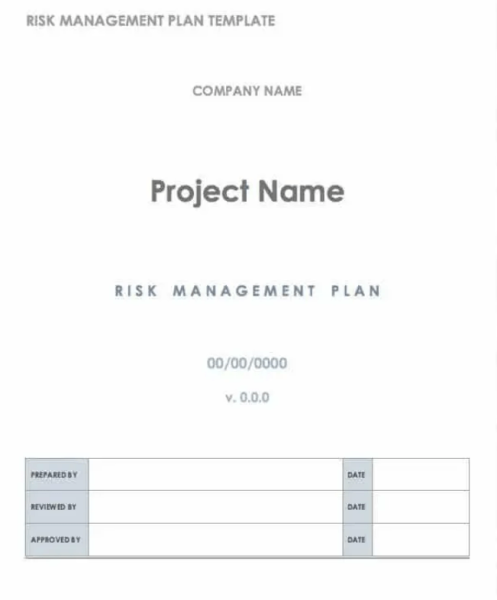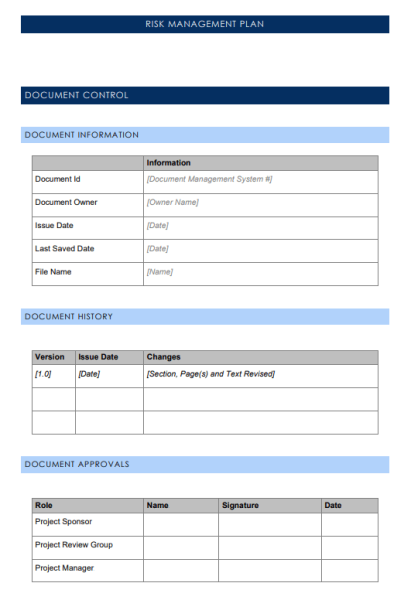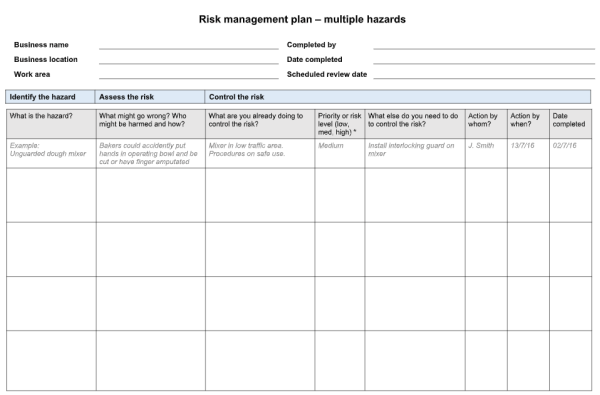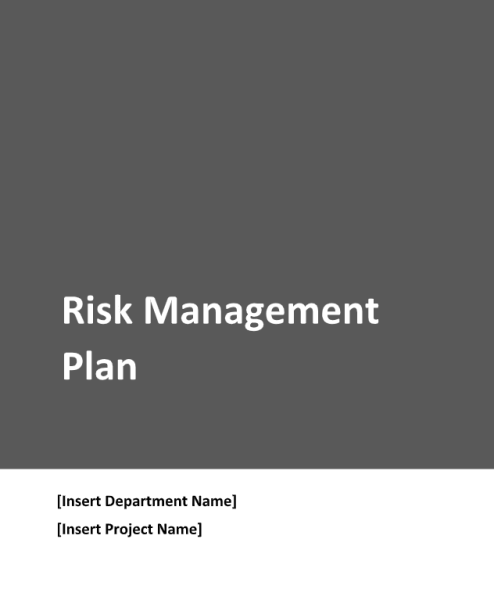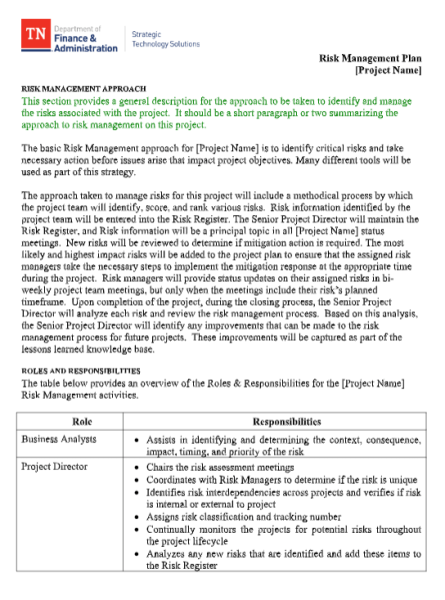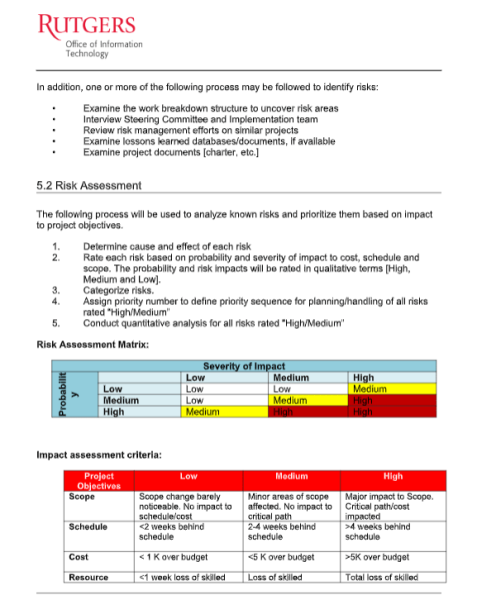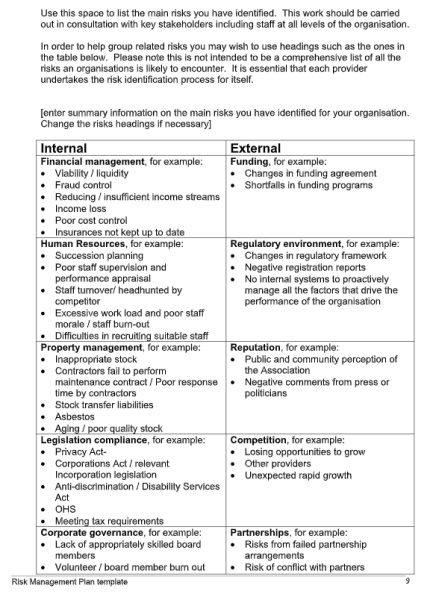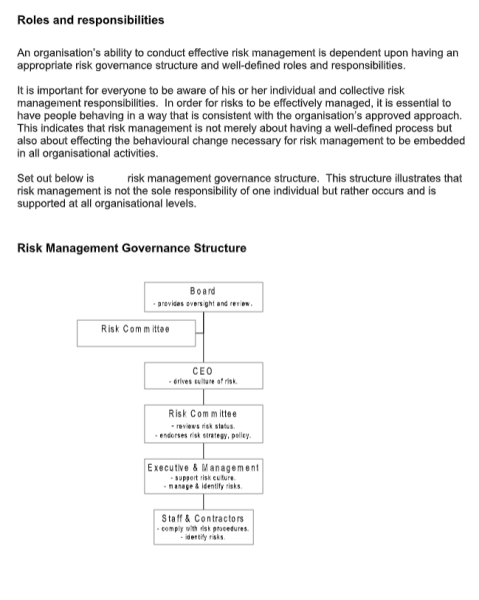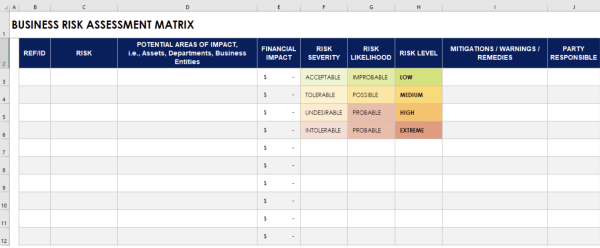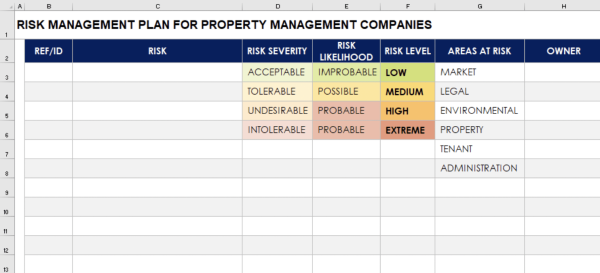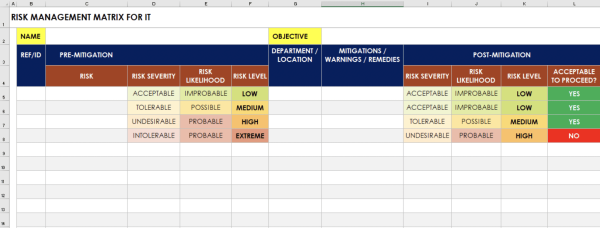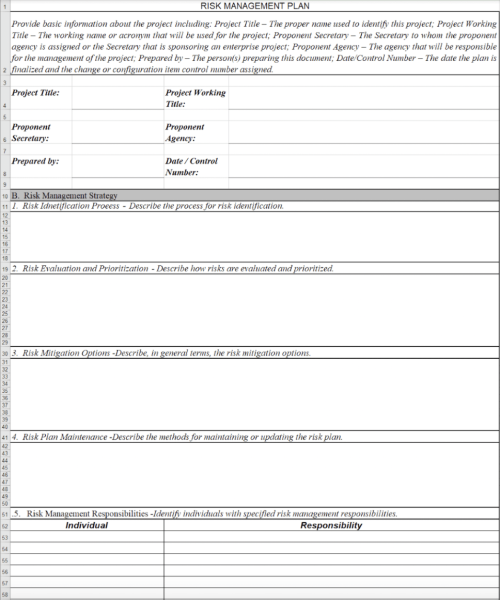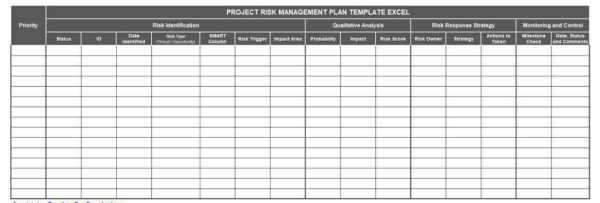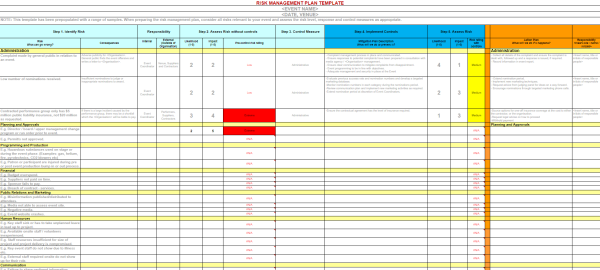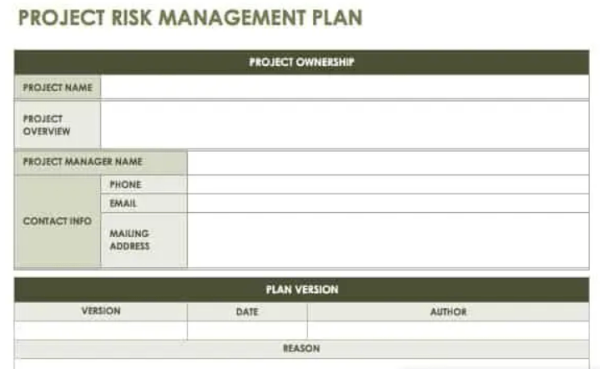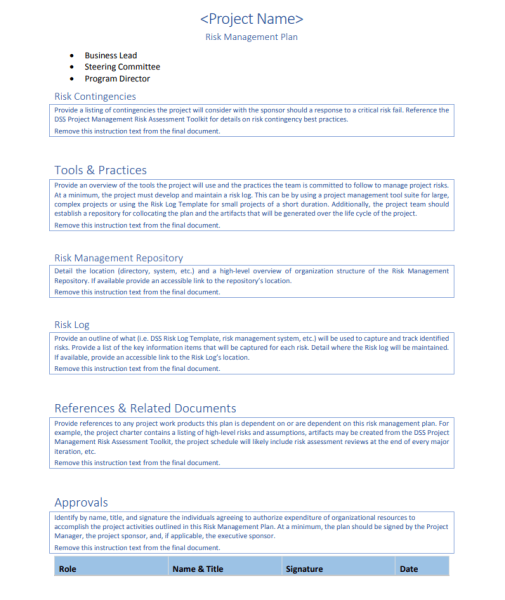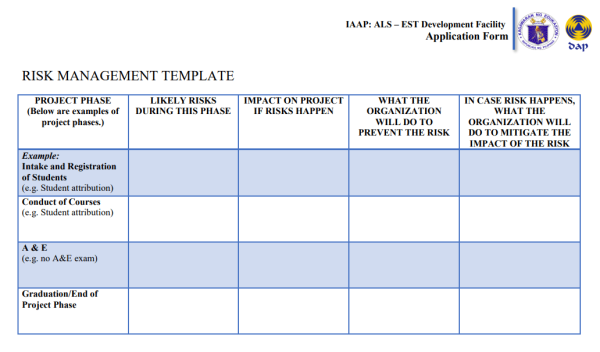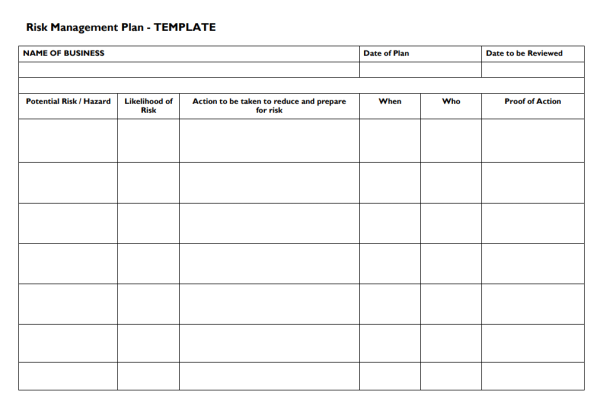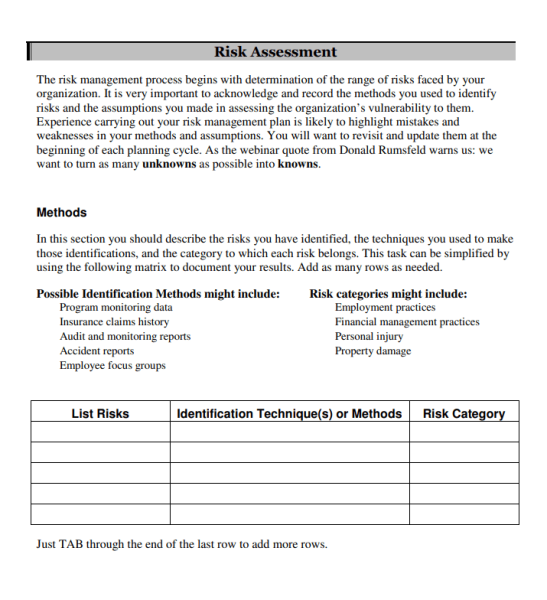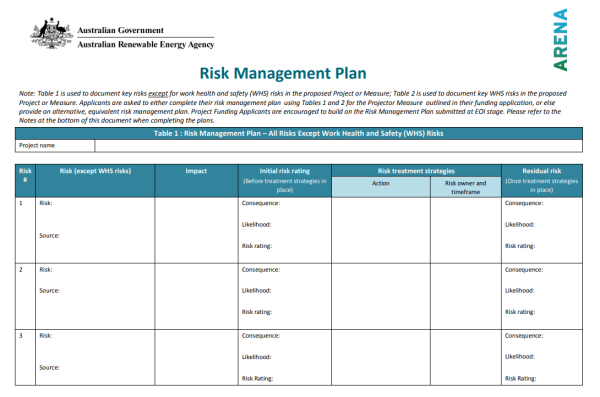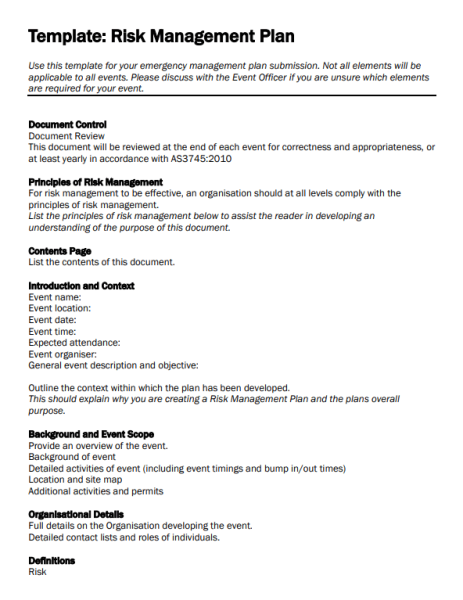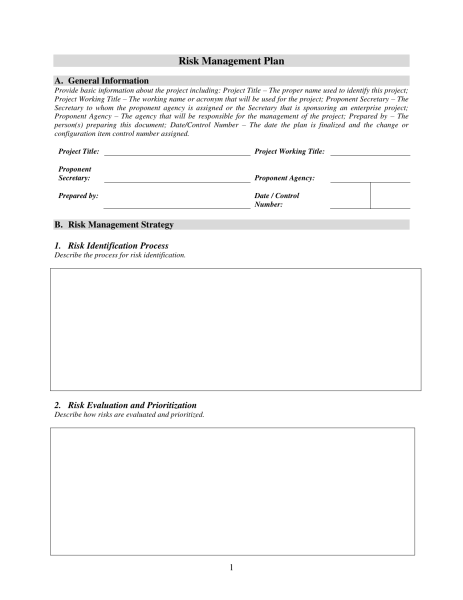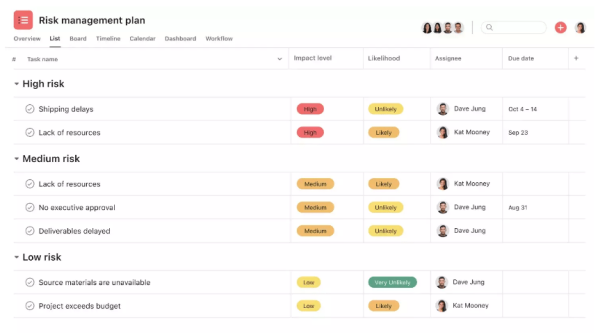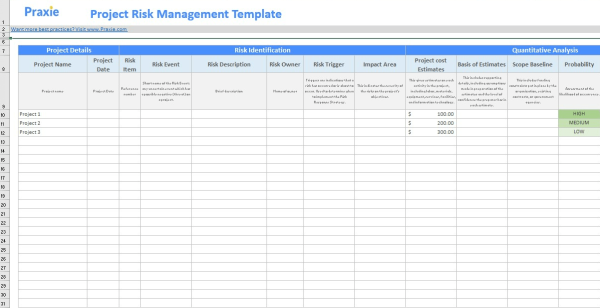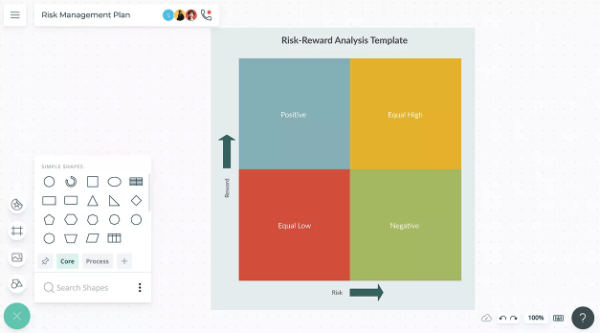A risk management plan is a critical part of the documentation of any project as it helps project managers identify and assess high potential risks and develop strategies to mitigate them. This management plan should be created during your project planning and it is important to understand this document should be updated regularly as the project grows and changes.
In agile risk management we try keep plans lightweight with issue or risk logs but traditional project management does require at times detailed risk management plans so this is my go to-go risk management plan template on google doc:
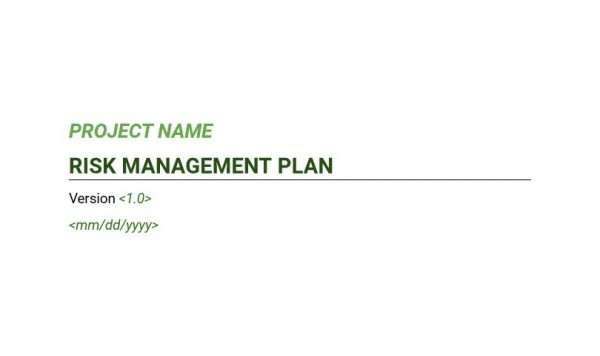
Components of Risk Management Plan
The objective of the Plan
The goal of why you are creating a plan.
Executive summary – Detail the length of the project, and project milestones, and introduce potential risks here.
The Types of risks – Detail the potential risks you have identified so far. To do this, you need to write the predicted scenario along with the mitigation plan you already discussed with your team. This will allow you to evaluate risks in a Probability Chart and an Impact Chart, giving enough criteria to determine if the risk is Low, Medium, or High level.
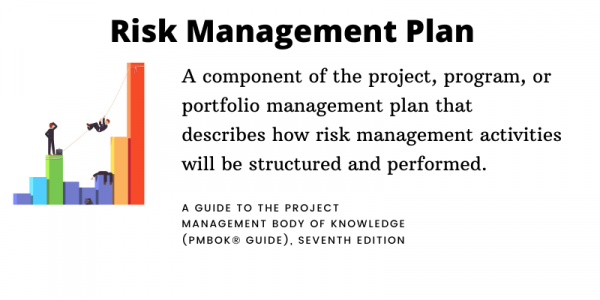
Risk Management Plan Template Word
How To Create a Risk Management Plan
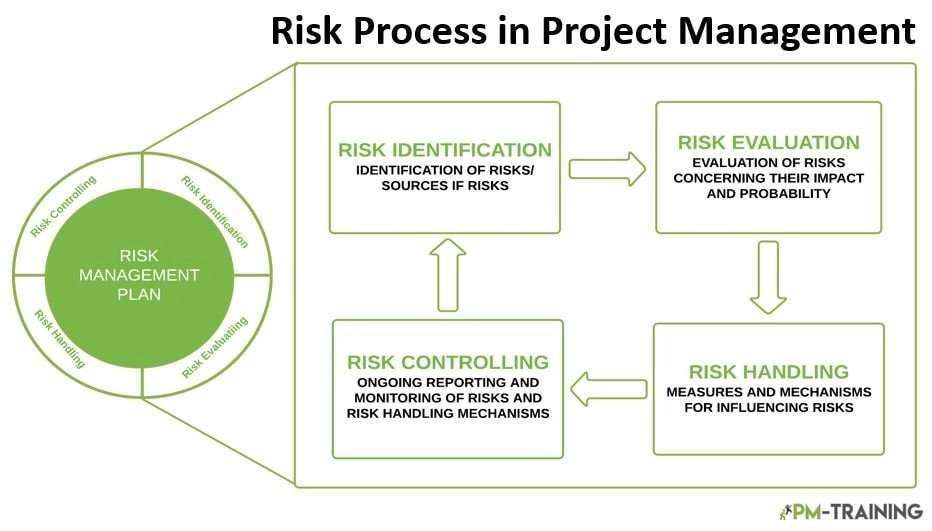
The goal of risk management is to minimize the negative effects of these uncertainties. These steps will help you organise your team, put a successful risk management plan in place, and increase their responsiveness and agility when handling adverse situations.
Identify the risk
In order to manage risks, it is important to first identify them. This may seem like a daunting task, but there are a few methods that can be employed to help. One is to simply ask your people what they believe the risks are. Another is to look at past events and try to identify what went wrong. Finally, you can use analytical tools to try to identify potential risks. Once you have identified the risks, you can then begin to develop a plan to manage them.
Analyze the risk
Now that you’ve identified potential risks, it’s time to analyze them. This will help you understand the likelihood of each risk occurring, as well as the potential impact if it does occur. To do this, you’ll need to consider the following factors:
1. The likelihood of the risk occurring
2. The potential impact of the risk
3. The time frame in which the risk could occur
4. The level of uncertainty associated with the risk
5. The degree of control you have over the risk
By taking these factors into account, you’ll be able to develop a more comprehensive analysis and start evaluating the risk.
Evaluate the risk
The third step is evaluating the risk. This includes understanding the risks, setting priorities, and developing a plan to address the risks. When evaluating the risks, you need to consider the following-
1. How likely are the risks to occur?
2. What can be done to reduce the likelihood of the risks occurring?
3. What can be done to reduce the potential consequences of the risks?
4. Based on these factors, you can decide whether to accept, transfer, or mitigate the risk.
Treat the risk
Now that you have identified, analyzed and prioritized the risks to your project, it’s time to create a plan to deal with them. The fourth step is to treat the risk.
There are four ways to treat risks:
1. Avoid the risk
2. Reduce the risk
3. Transfer the risk
4. Accept the risk
Which option you choose will depend on the nature of the risk, your objectives, and your budget. In some cases, you may even need to use a combination of these options. Once done you have the last step, Monitor and control the risk.
Monitoring and controlling the risk
The aim is to identify and correct any problems that may arise and to prevent new risks from occurring.There are a number of ways to monitor and control risk.
One way is to set up a system. For example, if your company is implementing a new process, it may put more emphasis on specific or critical constant tasks to make sure that the process is being followed correctly.
Another way to monitor and control risk is to have a system in place for reporting and investigating incidents. This system can help to identify problems early and prevent them from getting worse.
Risk Management Plan Template Excel
Risk Management Plan Template PDF
Risk Management Plan Template Online Tools
Utilize risk management to identify opportunities
While no project is without risk, by utilizing risk management techniques, project managers can identify opportunities and develop a plan to avoid potential problems. By taking a proactive approach to risk management, project managers can increase the chances of success for their projects.
For example, by understanding the risks associated with a project, a project manager can develop contingency plans that could be used to take advantage of opportunities that may arise. By being prepared for both risks and opportunities, a project manager can increase the chances of success for their project.
So if you’re looking for opportunities in project management, don’t forget to consider risk management. It may just be the key to unlocking the door to success.
Identifying opportunities
What happens when you identify an opportunity during the risk management process? How do you know if it’s worth pursuing? By improving the risk management plan, project managers can improve the chances of project success.
Here are a few things to look for when you’re trying to identify an opportunity during risk management:
A risk that can be turned into an opportunity
A risk that has a low likelihood of happening
A risk that would have a positive impact if it did happen
If you see a risk that meets all three of these criteria, then it’s worth considering as an opportunity. Pursuing opportunities during risk management can help you boost your organization’s performance and better manage risks.
FAQs
What is Risk Management?
Risk management is the process of identifying, analyzing, and responding to risks in order to minimize their impact on a project.
How to create a risk management plan?
A Risk management plan document contains the objective of the plan, the executive summary, and the types and levels of risk identified.
What are the five levels of risk?
There are five levels of risk in project management; identity, analyze, evaluate, mitigate and implement and control the risk.
What is an opportunity in risk management?
Opportunities for improvement in risk management plans can be identified by conducting a review of the current plan. This review should identify areas where the plan could be more effective and make recommendations for improvement.

